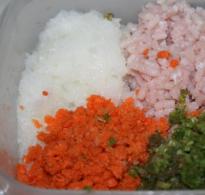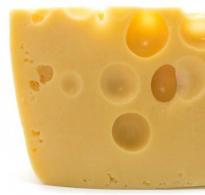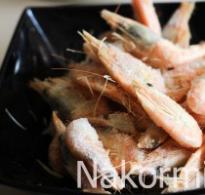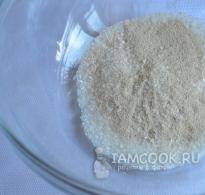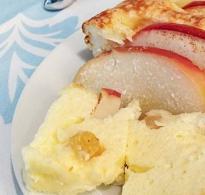How to distinguish a ripe avocado from an unripe one. Avocado: how to choose and store correctly, methods of ripening
Every year a new number of avocado fans appear. In fact, the buttery flesh with a nutty flavor is hard to resist. But, until now, few people know how to choose the right avocado so as not to waste money. After all, in our stores this exotic fruit It's not cheap at all. We read so as not to make mistakes.
By hardness
Some comrades, having read ridiculous advice, the first thing they do when choosing an avocado is to press on the skin. And without sparing any effort. So what does this give them? An unripe avocado will not ripen, but an overripe one will easily fall apart in your hands. No sense. Even more harm. Because after such manipulations, the fruit begins to deteriorate within a few hours. First a dark spot appears, and then rotting is not far away. By the way, even a completely unripe avocado can begin to rot.
And yet, you can choose exotic ones based on hardness. You just need to know how to do it correctly. Press lightly on the skin with a pad thumb. At the same time, the fruit itself should lie tightly in the palm of your hand. You shouldn’t poke an avocado with your index finger, especially when it’s on display. This could end badly. For example, broken arms or jaw. The seller will break them for you when he sees how you treat them. tender avocado. Based on the results of a competent “research”, the ripeness of the fruit can be determined with an accuracy of 90%:
- The skin is tight, practically does not give in under the finger - the avocado is unripe. Suitable for future purchase. Moreover, in room conditions it will ripen quite quickly.
- The skin is soft, you feel like softened butter under your finger, but it is slightly springy - ideal for purchasing and eating immediately or the next day.
- The peel is very soft, it doesn’t come back, you can almost feel porridge under your finger - you should refuse the purchase. The fruit is overripe and no longer suitable for eating.
As you can see, everything is simple. And you don’t have to make titanic efforts and try to crush the avocado right on the display.
Advice. You should press on the upper, narrower part of the fruit. This way there is less chance of harming the fetus. And the damage begins here, so you can easily detect it.
By knock and weight
Take an avocado in your hand. It should be weighty and dense. Excessive heaviness indicates that the process of rotting has already begun. A fruit that is too light will be 80% unripe. Once you make a mistake when choosing an avocado, you will quickly learn by weight to determine the approximate degree of ripeness of the fruit.
Now about the knock. It would seem - dense pulp, small size of the fruit. Well, what else should be knocking there? Bone! After all, every avocado has a seed inside. In an unripe one it is tightly connected to the pulp, and in an overripe one it is already in a mushy environment. An ideal avocado for purchase should have a light tapping sound when shaken. It is enough to do this procedure near the ear, and you will understand what we are talking about.
Of course, it won't be a distinct rumble. But you won’t confuse the characteristic muffled sound with anything. Try it to remember and not make mistakes.
According to the color of the place under the stalk
Some avocados are sold with a piece of branch or stem. If the seller doesn’t notice, then carefully tear off these unnecessary “spare parts” and look at the color of the flesh underneath:
- The place is light, with a beige or whitish tint - the avocado is unripe, you can buy it for a future event or leave it at home to ripen in a paper bag.
- The area is colored in various shades of green, closer to pistachio, sometimes a drop of juice is released - the fruit is fully ripe and ready to eat.
- A place of dark shades, brown, brown, closer to black - the fruit is long overripe and has already begun to deteriorate. This avocado is not suitable for food.
The avocado selection method is only suitable for freshly broken off stems. For those fruits that are sold without branches or cuttings, this method is not suitable. Because the place may have been abandoned for a long time, but the pulp will still be quite decent in terms of maturity and taste.
By skin color
In general, we do not recommend focusing on this method determining the ripeness of an avocado. The fact is that in our country as many as 3 types of these fruits are sold. And each variety has its own external differences, namely in the color of the peel at different stages of ripeness. We can only say:

- The bright green color of the skin indicates some degree of immaturity of the avocado.
- A dark green, very rich shade signals the immediate purchase of fully ripe fruit.
- The brown, almost brown color tells how long the avocado has been living in this world. And for eating this kind of food ripe fruit no longer suitable.
The only exception is the avocado variety with dark, almost black skin. It is never bright green or any shade of green at all. But you definitely won’t confuse this variety with anything else, because the peel itself is very bumpy, with large pimples. It looks like crocodile skin. By the way, this is where another exotic name comes from - alligator pear.
By time of year
Some sources recommend focusing on the date of purchase. They say that some varieties of avocados are sold only in certain months. I wonder how this affects the degree of maturity and right choice fruit for the table? No way.
Moreover, now avocados are found in our shop windows all year round. Therefore, the landmark was chosen incorrectly. It's better to trust your fingers, eyes and ears than a calendar chart. Moreover, many are well aware of the possibilities of today's industry and Agriculture. It’s a piece of cake for them to sell avocados from the August harvest in December and vice versa.
Advice. Try to choose an avocado with pimply, dark, thick skin. This variety has a very small seed. The smooth, light green fruits have a thin skin, but the pit inside is often enormous. As a result, very little pulp remains.
Now there is no problem for you how to choose the right avocado. You can safely go to the store for this extraordinary fruit. You certainly can't go wrong.
Video: how to choose the perfect avocado in the store
Understand the varieties. No two avocado varieties are the same. They vary slightly in size, color and shape depending on the variety. The appearance of a ripe avocado will depend on the characteristics of the variety to which it belongs.
- Check the variety with the seller if the avocados are not clearly labeled.
- Remember that the hardness of a ripe avocado is the same, regardless of species diversity.
- Differences in appearance between avocado varieties, as well as the possible differences between two fruits of the same variety, makes visual assessment a less than reliable method in determining the ripeness of an avocado. Still, these are useful indicators of how ripe an avocado is, since they are often the first thing you come across.
Estimate when the avocado was harvested. Various varieties going to different time of the year. If you are choosing an avocado in September and are considering between an early fall variety and a late fall variety, the early fall variety is more likely to be ripe.
- Avocado "Bacon" is usually available with late autumn until spring and is considered a mid-winter variety.
- "Fuerte" avocados are also harvested from late autumn to spring.
- Gwen avocados are most often harvested during the fall and winter.
- The "Hass" and "Lamb Hass" avocado varieties are harvested year-round.
- Pinkerton avocado harvest available with early winter until spring.
- You can find Reed avocados on sale in the summer and early fall.
- Avocados of the "Zutano" variety ripen between early September and early winter.
Mark the dimensions and shape. Before an avocado ripens, it must be ripe. Each variety has a certain corridor of sizes, weights and shapes characteristic of a ripe avocado.
- Avocado “Bacon” is medium in size, from 170 to 340 g, oval in shape.
- "Fuerte" avocados are medium to large when ripe, weighing 140-400 g. They are more elongated than "Bacon", but are still pear-shaped.
- Avocados "Gwen" can vary in size from medium to large, 170-425 g. They are oval in shape, plump, plump.
- "Hass" avocados can be either medium or large in size, weighing from 140-340 g. They are also oval.
- Lamb Hass avocados are large, weighing from 330 to 530 g. They take on a symmetrical pear-shaped shape.
- Pinkerton avocados are elongated into a pear shape. They weigh between 225 and 510 g.
- Reed avocados come in small to medium sizes, weighing from 225 to 510 g. They are the roundest of all varieties.
- "Zutano" avocados ripen to medium or large sizes, usually weighing from 170 to 400 g. They are slender and pear-shaped.
Inspect the color. The skin color should be dark in most varieties, but there will be subtle differences in each.
- Bacon and Fuerte avocados should have smooth, green skin.
- Gwen avocados should have limp, pliable and mottled skin when ripe.
- "Hass" and "Lamb Hass" avocados have the most distinctive coloring. A ripe Hass avocado turns dark green to purple in color. A black avocado will most likely be overripe, while a bright green avocado will most likely be unripe.
- Pinkerton avocados, like Hass avocados, develop a deeper color as they ripen. A fresh Pinkerton avocado should be a deep green color.
- Avocado "Reed" retains its bright green color even when it matures. The peel is usually thick, with soft tubercles.
- When the Zutano avocado ripens, the skin becomes thin and yellow-green in color.
Sometimes it is difficult to find ripe exotic fruits on the shelves of our stores, and this is not due to the irresponsibility of sellers or administration, the difficulty lies in exporting foreign products. Especially things like avocados.
This fruit has a delicate, creamy texture that is difficult to preserve during transportation. That is why vegetables and fruits from warm countries are brought green, not ripe. During the journey, they ripen, and final ripening occurs on the shelves of the supermarket. And of course, this fact greatly influences the taste of the product: it’s one thing when fruits hang on branches under the hot sun, soaking up the rays and fresh air, and quite another thing when unripe fruits are carefully packaged and processed, “floating” or “flying” around the world to end up on our table.
How to tell if an avocado is ripe
In any case, you always want to enjoy exotic vitamins, and in order to get maximum pleasure, you need to learn how to choose the right fruits. How to choose an avocado and not make a mistake? In the case of avocados, always pay attention to its color. The hard peel is light or dark green or brown (brown) in color, sometimes with small, light inclusions - without any dark or yellow spots or sudden changes in color. Initially, any avocado is green. As it ripens green variety becomes darker, and the brown variety changes color from light green to brown. Therefore, this type of “alligator pear” can sometimes have green spots the size of a 5-kopeck coin. This fruit is quite suitable for eating.

To be sure the avocado is ripe, gently press on the top (narrower) part of the fruit. The pulp should be soft, like slightly melted butter. When pressed, the peel will press through a little; there should be no dents left. If the avocado is softer, then most likely it has already gone bad.
From the moment you press hard on the fruit, it will begin to spoil. The very next day a dark spot will appear in this place, and very soon the fruit will no longer be suitable for food.
Another important point: to find out if an avocado has gone bad, you need to listen to the sound of the pit inside the fruit. Pick up the “alligator pear” and jog a little. You should hear a faint, dull sound of the bone hitting the walls. If there is no sound, then it is better to choose another fruit.
So to choose ripe avocado, pay attention to three things:
- fruit color
- pulp density
- bone sound
How to speed up ripening
Most often, there are no soft avocados in the vegetable departments; all the fruits are hard and not ripe. In this case, choose fruit without dents, scratches or other damage. Try to choose the softest one so that the fruit can ripen at home. Wrap the avocado in newspaper and then place it in a baggie. natural fabric(or wrap it in a piece of fabric). Place 1 dried chili pepper between the newspaper and the bag. This way the avocado will ripen much faster.
If you can't do this, store avocados at room temperature. Do not leave the fruit in the sun or put it in the refrigerator. Within 2-7 days, the alligator pear will “arrive.” At this time, try not to put pressure on the fruit, checking its ripeness, so as not to further injure the delicate pulp.
Peeling a ripe avocado is very easy! Take a non-sharp knife and cut small piece peel around the stalk. Then peel off the skin as you would normally peel potatoes. Remove the peel in a circle and then remove the sides of the peel by hand.

Then cut the avocado lengthwise into two parts. A large bone will remain in one of the parts. Carefully remove the pit so that the flesh remains intact.
Now you can cut the avocado for a salad or other dish.
Avocado instead of eggs
Many people think that ripe avocado tastes like... boiled eggs. IN vegetarian recipes Eggs are often replaced with avocado slices. Yes, it’s quite an exotic option, and not a cheap one. However, the result is worth it!
 A little secret: salt the avocado pulp with pink (or black) salt to make the fruit even more like chicken eggs. Now this fruit can replace eggs in classic recipes salads, for example in Olivier.
A little secret: salt the avocado pulp with pink (or black) salt to make the fruit even more like chicken eggs. Now this fruit can replace eggs in classic recipes salads, for example in Olivier.
What to cook with avocado
One of the simplest and most delicious “dishes” is avocado pulp with salt, black pepper and lemon juice (literally a few drops). If you are eating an avocado for the first time, then try the fruit in this form: cut the “alligator pear” into two halves without removing the peel. Remove the pit from the pulp. Salt and pepper the halves and sprinkle with lemon juice. Eat with a teaspoon.
You can also make Mexican guacamole paste from avocado, salad with spicy chips,..., from avocado pulp with garlic and spices you can make delicious.
Avocados are rarely cooked, as this causes the fruit to lose its flavor.
Knowing how to choose an avocado, you don’t have to worry that the fruit you purchase will turn out to be tasteless or overripe. This exotic fruit gained popularity not so long ago, but has already become a favorite of many.
The fruit has a spherical or slightly elongated shape (can be from 7 to 20 cm long). Many people don’t even know what it is – a fruit or a vegetable. The fact is that, according to all the laws of biology, this is a fruit, since it grows on a tree and has a seed inside. But in their own way taste properties it is more like a vegetable: it has little sugar, it resembles pine nuts And butter thanks to its oily consistency. But still, avocado is considered a fruit, although it is often used for cooking variety of salads with sour and salty sauces.
A tasty avocado has a composition rich in vitamins and various elements; it is also often called a natural antioxidant.
Calorie content varies from 200 to 220 kcal. It depends on the fat content of the fruit, its variety and the geography of cultivation.
Main signs of ripe fruit
You can choose a ripe avocado based on several criteria:
- dark green skin color;
- soft but elastic consistency;
- peeling of the bone.
Ripe fruits must be eaten immediately, as they spoil very quickly. If they need to be kept for a few more days, it is better to wrap the product in paper and place it in the vegetable compartment in the refrigerator.
Fruits cut in half can be stored for no more than 2 days. The cut area often darkens, so it is advisable to treat it lemon juice and wrap in film.
If the fruits are about to start to spoil and there is no way to eat them now, you can grind them into puree and freeze them. This will help preserve the beneficial properties to the maximum.
Criteria for selecting a mature fruit
Sometimes it is not easy to choose a ripe fruit, since the upper layers have already acquired softness and juiciness, while the inner ones still retain astringency and hardness. On plantations, the crop is always harvested slightly unripe so that it can withstand transportation normally. Therefore, finding the perfect fruit right on the counter is quite difficult.
By color and softness
Ripe specimens are covered with a thin skin of dark green (closer to brown) color. Such fruits can be consumed immediately after purchase. A light shade of green indicates that the fruit is not yet ripe. Moderate green is proof that the fruit will be ready to eat in about 3 days. The rich greenness of the peel is direct evidence of almost full readiness for use.
California avocados have black skin. This is natural for the fruits of this variety. They are very soft and don't hold their shape at all. Therefore, they are most often used for cooking various snacks by type of pates, sauces and purees. The pulp of this fruit can simply be spread on slices of bread instead of butter.
However, you should not focus solely on the shade: the main thing is elasticity. You need to take the fruit in your hand and try to squeeze it with your fingers. This must be done very carefully, otherwise you may suffer from dissatisfaction with sellers if an overripe avocado falls apart right in your hands. If the flesh is elastic and hard, it means that the fruit has not yet reached the required degree of ripeness. The easily pressed pulp, which remains even after the fingers are removed, indicates that the fruit is already overripe. Such fruits should not be taken, as they may turn out to be rotten inside.
By cutting
In a well-ripened fruit, the pulp peels off from the seed, so you can also focus on this. You need to bring the fruit to your ear and shake it lightly. If you hear a tapping sound, it means you can buy such a fruit. If there are no sounds, the fruit is not yet ripe, so the pulp still sticks tightly to the stone.
The second common name for avocado is alligator pear. The unusual “vegetable” taste of this fruit makes it ideal ingredient for salads, pasta and various snacks. The fatty acids, potassium, copper, iron, and riboflavin contained in avocados improve the general condition of the body, normalize the functioning of the cardiovascular and digestive system. But in order to fully enjoy the taste of the fruit, as well as get your “dose” of benefits from it, you need to know how to choose an avocado. What criteria should you follow when purchasing?
Ripe avocado: how to choose by color
One of the main criteria based on which you can buy ripe fruit, is the color of its peel. Please note the following points:
- Light green skin indicates that the avocado is still completely unripe. If you place it on the windowsill, the fruit will ripen in about five days.
- The moderately green peel also serves as an argument against the purchase: such an avocado will ripen only on the third or fourth day after purchase.
- Rich green is a good choice. The fruit with this peel color is almost ripe. Its full taste will be revealed in 24 hours.
- A dark green color approaching brown means the avocado is already fully ripe. A fruit with such a peel can be eaten immediately, without waiting for it to ripen.
- Very dark color peel (green, almost completely turning into brown) indicates that the avocado is overripe. In this case, the taste of the fruit will no longer be able to “boast” of those shades for which avocados are so valued. Naturally, if we are not talking about the Haas variety: it is characterized by a very dark, almost black peel.
There is another little trick to accurately identify a ripe avocado. You need to remove the stem from the fruit you like and check what color is underneath it. If it is bright green with brownish veins, then you can complete your “research” and return home to prepare the salad. A yellow-green or dark brown (brownish) tint clearly indicates that the avocado is unripe or overripe, respectively - you will have to continue your search.
It is bad if the skin of the fruit is covered with an excessive number of black spots. A “healthy” fruit may have only one small spot, otherwise the “marks” clearly indicate spoilage of the avocado.
How to choose the right avocado by touch
It is almost impossible to buy a good fruit just by visually assessing it. This means that you will have to literally take the situation into your own hands. The ripeness of an avocado is determined by the following characteristics:
- when pressed, the fruit gives in a little, but as soon as the pressure stops, the dent quickly disappears;
- you can clearly hear the tapping of the pit inside the avocado if you shake the fruit near your ear;
- when you press on the trace of the cutting, juice slightly releases through it.
You should avoid very hard fruits that do not respond to pressure and do not “sound” when shaken. These “stone-shaped” avocados have not yet ripened enough to be used for cooking. If you have no choice (after all, there are often no ripe fruits in stores), you should purchase unripe fruit. You can help him “grow up”: to do this you need to put an avocado in paper bag or simply wrap it in paper and place it in a dark, dry place where it is stable room temperature. The shelf life depends on the degree of initial “readiness” of the fruit.
The bend in the other direction is also bad. If the avocado you like is too pliable and it seems that mushy pulp is hidden under the skin of the fruit, then the fruit has long been overripe. In particularly “neglected” cases, you can even accidentally crush too much ripe fruit(therefore it is better to behave moderately “restrained” in relation to avocados).
How to choose an avocado in a store: the most delicious variety
Most often, the following avocado varieties are offered to domestic buyers:
- Florida. Mainly found on shelves in winter. The peel of the fruit is difficult to remove; during peeling, the edible pulp is also partially removed. Avocado is characterized by an unusual sweetish flavor, which makes the fruit poorly suited for most salads. But the Florida variety is considered the least high-calorie.
- Pinkerton. The most common variety. It cleans well and is different good taste, which makes it indispensable during culinary experiments.
- Californian, or Haas. This variety is often confused with Pinkerton, but it is quite easy to distinguish them by the peel: in Haas it is much darker, rather close to brown in color. The fruit itself has a round shape, and its pulp is highly pliable.
Most delicious variety avocado - haas. But it is almost impossible to buy this fruit ripe: due to the excessive softness of the fruit, it is difficult to transport, so stores usually have unripe “representatives”.
Pinkerton is perhaps the best option. It has a small seed, and its peel is easily removed without affecting the pulp. In addition, the fruit is suitable for preparing the most common avocado dishes - rolls and salads.
The Florida variety fares worst. It is considered the most tasteless and uneconomical: due to large stone and the inability to peel without pulp, a significant part of the paid weight ends up in the trash.
Avocado is a very controversial fruit. Many people start spitting as soon as they hear about it: the whole point is that few people have ever tried the ripe fruit. But now you know how to choose the right ripe avocado.

